When you’re shopping for a new mattress, it quickly becomes clear that prices for the same size vary pretty significantly. But what differentiates a cheap mattress from an expensive one?
The price disparity is typically based on a mattress’s construction and the quality of its materials, which affects its expected lifespan. But that doesn’t mean that a $2,000 mattress is always going to be a better buy than a $700 mattress — there are multiple factors to consider when you’re comparing cheap and expensive mattresses.
Cheap vs expensive mattresses – which is best? Let’s get into it.
How Much Do “Cheap” and “Expensive” Mattresses Cost?
“Cheap” and “expensive” are subjective, but generally speaking, cheap mattresses cost less than $1,000 for a queen, while expensive mattresses cost more than $2,000. Average mattresses sit somewhere in the middle of those two prices.
Cheap Mattresses: Pros and Cons
First and foremost, the biggest appeal of an affordable mattress is its budget-friendly price tag, which is a hard feature to beat. Inexpensive mattresses often have fewer materials, making them lighter in weight and easier to move. For certain life stages, like during or immediately after university, it makes sense to have a mattress that isn’t a struggle to move. Cheap mattresses can also be great beds for a guest room, where you want something comfortable but not too pricey.
On the downside, cheap mattresses don’t always have the lifespan of their costlier counterparts. Most mattresses have a lifespan of seven to 10 years, but the cheapest options tend to last five to seven years at best. Depending on how cheap you go, these mattresses may also be lacking in spinal or edge support. Since a key component of any mattress is how well it supports your spine, compromising here could lead to various aches and pains.
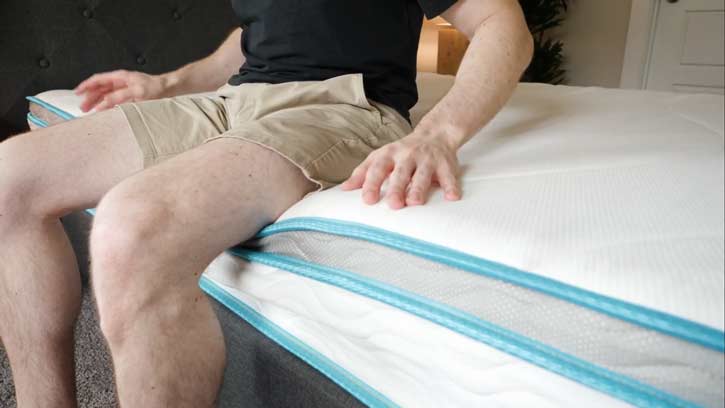
Expensive Mattresses: Pros and Cons
Expensive mattresses tend to fall into the luxury mattress category, which means upgraded materials that deliver better support, more cooling power, and better motion isolation. Those features can make for a better night’s sleep, especially if you share your bed with a partner.
When you spend more money on a mattress, you can reasonably expect a longer lifespan, too. Materials like eco-friendly latex and organic cotton and wool, along with certifications that indicate a high level of safety or sustainability, can translate to a mattress that performs well for at least a decade. These materials, along with cooling technology, can minimize heat retention or actively wick away body heat — an important consideration if you routinely overheat at night. If you’re looking for a long term investment and want a high-end mattress, consider our experts picks on the best luxury mattresses.
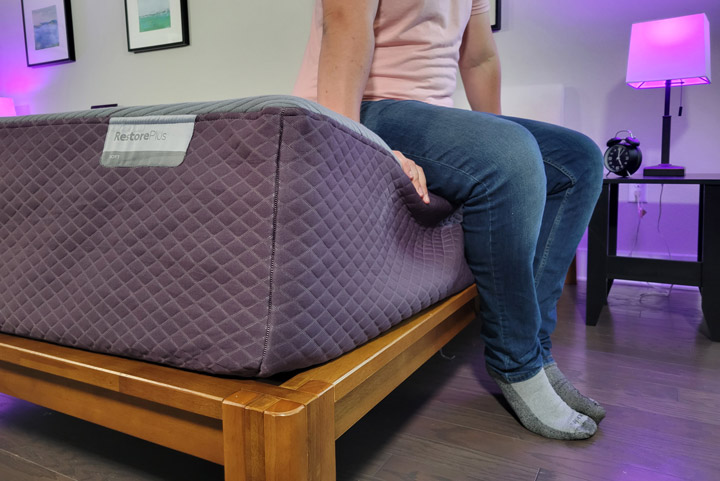
What to Look For in a Mattress
The materials in a mattress are usually the biggest driver behind its price tag, so pay close attention to construction when you’re shopping for the best mattress for the money.
Materials
While foam is used in just about every mattress, it’s the type of foam that influences the cost. Memory foam and latex foam, for example, are high-quality materials that push the price up. Polyfoams, on the other hand, are cheaper to produce and lower in quality, so you’ll typically find these in less expensive mattresses.
Memory Foam
High-density memory foam is generally found in more expensive mattresses. It’s cushioning and contouring, so it distributes body weight well and helps relieve pressure. Since this material has a tendency to trap heat, expensive mattresses made with memory foam often feature perforations and cooling infusions to minimize heat retention.
Some cheap mattresses contain a single layer of memory foam, paired with layers of cheaper polyfoam. Many expensive mattresses use better quality memory foam with certifications like CertiPUR-US, which means they’re free of harmful chemicals and materials.
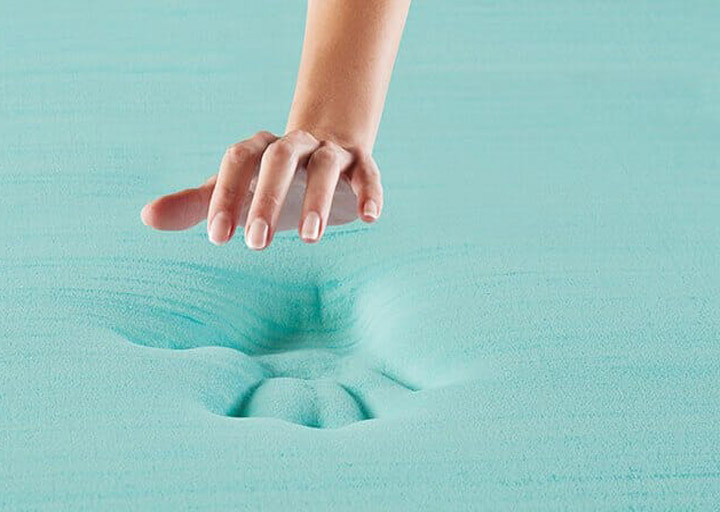
Latex
Latex is another material found in expensive mattresses. Natural latex comes from the sap of rubber trees, and it’s a durable, temperature-regulating material that adds a gentle buoyancy. It has pressure relief comparable to memory foam, but without the heat retention. It’s also eco-friendly. On the downside, latex mattresses tend to be expensive and the material adds significant weight, which can make it difficult to move these mattresses from one place to another.
While you won’t generally find natural latex in cheap mattresses, you may find synthetic latex. Unlike the real thing, synthetic latex isn’t particularly durable and it can have issues with moisture.
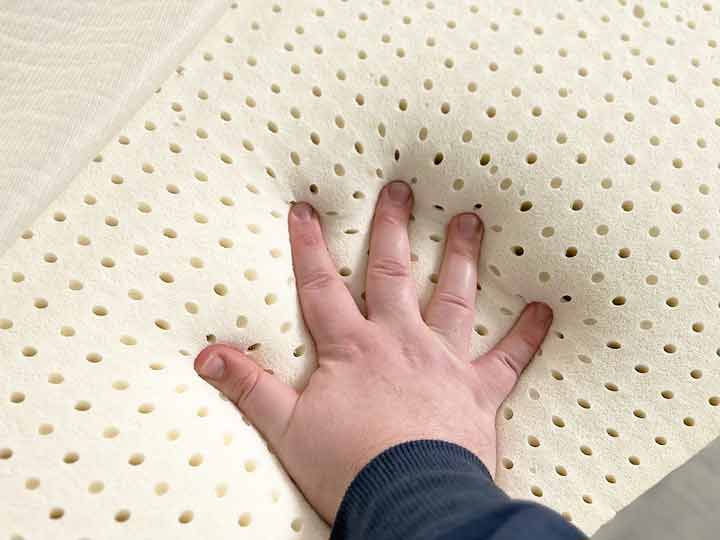
Coils
In hybrid mattresses, coils add support, bolster the perimeter, and add responsiveness. In cheaper mattresses, coils are generally lower grade, which means less resiliency and less support. The coils in expensive mattresses are usually individually wrapped for targeted support and improved motion isolation.
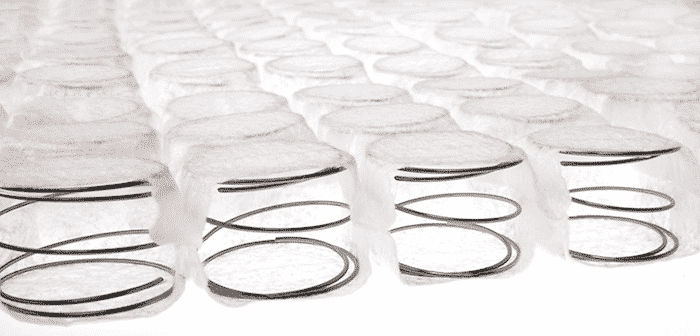
Construction
In addition to material choice, the construction of a mattress can influence its price.
All-Foam
All-foam mattresses don’t have a coil layer. Instead, the comfort and support layers are made of different types of foam. That makes them less expensive than their hybrid counterparts, but you can find all-foam mattresses in a wide price range, from cheap to expensive. The price difference is based on the quality of the foam used. Still, all-foam beds usually aren’t as durable as hybrids, no matter how much money you spend. We have reviewed many all-foam mattresses, if you are considering this take a look at our picks of the best memory foam mattresses.
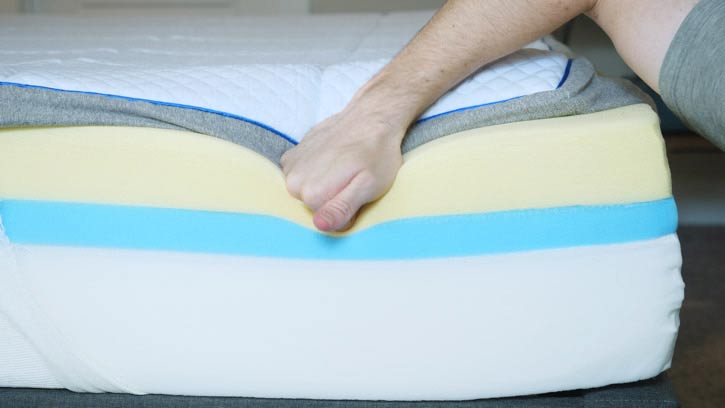
Hybrid
Hybrid mattresses pair foam comfort layers with coil support layers, which add durability and support. Most sleepers, especially those in higher weight ranges, benefit from the enhanced support. Edge support tends to be better in hybrids too, since many mattresses feature reinforced coils around the perimeter. That makes it possible to really spread out (a great feature for couples) and easier to get in and out of bed.
See More: Best Hybrid Bed
Like all-foam mattresses, hybrids come in a big price range. You can expect to find more responsive, higher-gauge coils in expensive mattresses, often with reinforcements around the perimeter and through the center third of the bed. In cheap mattresses, the coils are usually lower quality.
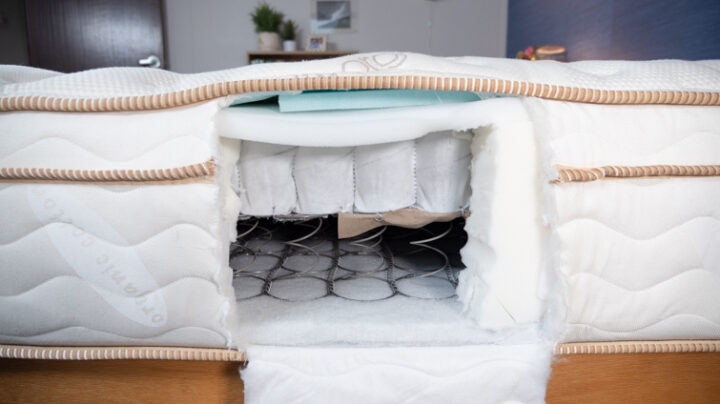
Innerspring
Innerspring mattresses are comparable to hybrids, in that they contain both foam and coils. In fact, most modern innersprings are technically hybrids because of the ratio of memory foam or latex to coils.
Traditional innerspring mattresses have a thin comfort layer over coils, which gives them a bouncy, responsive feel. If you can find a true innerspring mattress, they tend to be on the cheaper side of the price spectrum.
Support
Spinal support is the primary purpose of a mattress. Between its materials and its construction, a mattress should support your body in a manner that maintains a neutral spine. When your spine shifts out of alignment overnight, you can wake up with aches and pains.
Support needs vary depending on the sleeper’s body type. For example, heavier people tend to require more support to maintain proper alignment, since their weight often means they sink deeper into a mattress.
In cheap mattresses, support can be compromised because of the quality of the materials used. Lightweight sleepers may find that a cheap mattress works just fine to support their weight comfortably, while a heavier sleeper on the same mattress may not be able to maintain a neutral spine alignment.

Edge Support
Edge support describes how secure a mattress is around the perimeter. Couples who like to spread out in bed may benefit from a mattress with good edge support.
Edge support can also be beneficial for people with mobility issues. Better edge support makes it easier to get in and out of bed without feeling like you’re going to slide off. Edge support is usually better in more expensive mattresses, and particularly in hybrids with reinforced coils around the sides.

Motion Transfer
For people who share their bed with a partner or pet, motion isolation is an important consideration. A mattress that dampens motion keeps disturbances to a minimum. That means the movements of a restless partner changing positions in the night aren’t transferred across the mattress, so a partner isn’t jostled awake.
Materials and construction can affect motion isolation. For example, memory foam isolates motion very well. High-grade coils can also dampen motion. Both of these materials are generally found in more expensive mattresses. If you’re looking for a mattress that is good for motion isolation or sharing a bed, consider our best mattresses for couples.

Customization
Some mattresses come with customization options, but this benefit is usually only found in expensive beds. You may be able to choose from multiple firmness options to better accommodate your sleep style, unzip the mattress top to incorporate different comfort layers (a feature available in the Helix Elite collection), or adjust firmness with the touch of a button (an option in the Saatva Solaire). Mattresses that pair with adjustable bases also allow you to customize your sleep setup.

The Bottom Line
While the price tag isn’t the sole indication of quality when it comes to mattresses, there is a kernel of truth in the old saying, “you get what you pay for.”
Cheap mattresses tend to have lower-quality materials, minimal certifications (if any), fewer upgrades for benefits like cooling or edge support, and a shorter lifespan. That said, a cheap mattress could be a great option if you’re living in a dorm or adding a bed to your guest room.
Expensive mattresses tend to offer more bells and whistles and have a longer lifespan, but you pay more for all of these features. So which is best? It depends! Understanding the benefits and drawbacks of both cheap and expensive mattresses puts you in the best position to make the most educated decision.
FAQs
Is there a difference between a cheap and expensive mattress?
Yes. The quality of materials is the biggest differentiator between cheap and expensive mattresses. Cheap mattresses lack many of the upgraded features of expensive beds, such as enhanced lumbar and edge support, cooling ability, and motion isolation.
Is it worth spending extra money on a mattress?
It’s usually worth spending more money on a mattress to get one that meets your specific sleep needs and performs well for many years. But if you’re looking for a short-term mattress, you may be able to find a cheaper option that works well for your body type and sleeping position.
Does a good mattress really make a difference?
Yes. The best mattress is one that accommodates your body type and sleeping position, and it can be the difference between quality sleep and restless nights. Since sleep is so important to our overall health, it’s important to create a sleep space that meets your needs, and that includes the mattress.
Is it okay to buy a cheap mattress?
The price of a mattress isn’t as important as its ability to support your body type and preferred sleep position. If you can find a cheap mattress that does that, then consider it a great buy. Just keep in mind that you probably won’t get the same longevity out of a cheap mattress.


